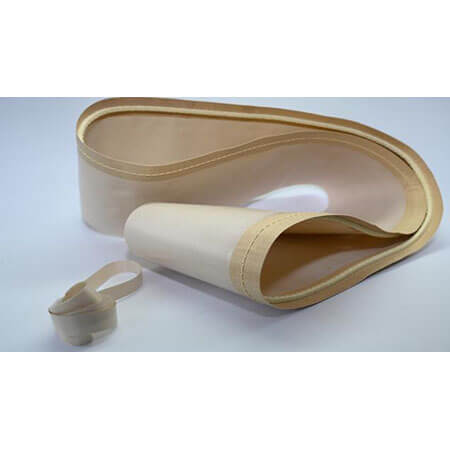PTFE Heat Sealing Belt are designed to withstand high temperatures and resist chemical corrosion, making them ideal for use in heat sealing machines. These belts are fabricated from PTFE (polytetrafluoroethylene), known for its non-stick properties and high thermal stability, which is crucial for effective sealing in packaging and manufacturing processes.
We are extensively used in industries that require sealing of plastic films, such as food packaging, pharmaceuticals, and electronics packaging. These belts ensure a strong, consistent seal without adhering to the material being sealed, thus enhancing production efficiency and product integrity.
We are extensively used in industries that require sealing of plastic films, such as food packaging, pharmaceuticals, and electronics packaging. These belts ensure a strong, consistent seal without adhering to the material being sealed, thus enhancing production efficiency and product integrity.
PTFE Heat Sealing Belt
Heat Sealing PTFE coated fabric paper packaging belt
Our PTFE(Teflon)coated fabrics have the following uses in heat sealing applications:
Side sealer belts for polythene(PE)packaging
Mesh belts for heat shrink tunnels
Release fabrics for uPVC welding platens
Non-stick fabrics for covering hot wire sealing processes
Features & Benefits:
Low friction
Non-stick
High temperature resistance
Heat transfer
High tensile strength Flexible
Selecting the appropriate
Temperature Compatibility: Choose a belt that can operate at the temperatures required by your heat sealing processes.
Belt Dimensions: Ensure the belt dimensions fit your sealing equipment.
Durability: Consider belts with reinforced edges for increased durability and longer operational life.
Q: How long do typically last?
A: The lifespan varies based on usage and maintenance, but with proper care, these belts can perform effectively for several years.
Q: How do I maintain?
A: Regular cleaning to remove any adhesive residue and checking for mechanical wear are essential maintenance practices.
The demand for products is growing, driven by advances in the packaging industry and the increasing need for efficient, high-quality sealing solutions. Recent technological improvements have focused on enhancing the thermal properties of PTFE belts to accommodate faster production speeds and varying packaging materials.
The manufacturing process for involves specialized techniques to ensure high-quality, durable products. This includes the application of PTFE coatings on robust fabrics and precision cutting to meet specific size requirements. Manufacturers and suppliers prioritize consistent quality control to ensure each belt meets stringent industry standards.
PTFE Heat Sealing Belt
involves several key factors:Temperature Compatibility: Choose a belt that can operate at the temperatures required by your heat sealing processes.
Belt Dimensions: Ensure the belt dimensions fit your sealing equipment.
Durability: Consider belts with reinforced edges for increased durability and longer operational life.
Q: How long do typically last?
A: The lifespan varies based on usage and maintenance, but with proper care, these belts can perform effectively for several years.
Q: How do I maintain?
A: Regular cleaning to remove any adhesive residue and checking for mechanical wear are essential maintenance practices.
The demand for products is growing, driven by advances in the packaging industry and the increasing need for efficient, high-quality sealing solutions. Recent technological improvements have focused on enhancing the thermal properties of PTFE belts to accommodate faster production speeds and varying packaging materials.
The manufacturing process for involves specialized techniques to ensure high-quality, durable products. This includes the application of PTFE coatings on robust fabrics and precision cutting to meet specific size requirements. Manufacturers and suppliers prioritize consistent quality control to ensure each belt meets stringent industry standards.
 English
English Français
Français Deutsch
Deutsch Русский
Русский Português
Português Italiano
Italiano हिन्दी
हिन्दी Español
Español Nederlandse
Nederlandse العربية
العربية Tiếng Việt
Tiếng Việt ภาษาไทย
ภาษาไทย Bahasa Indonesia
Bahasa Indonesia বাঙ্গালী
বাঙ্গালী Türk
Türk 繁體中文
繁體中文